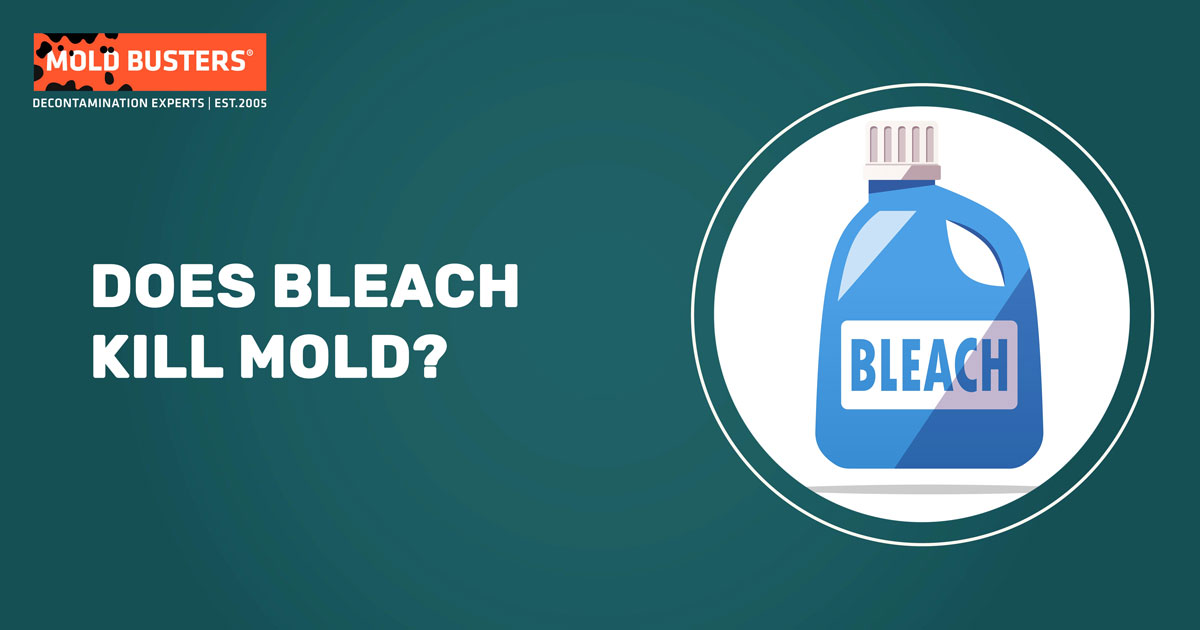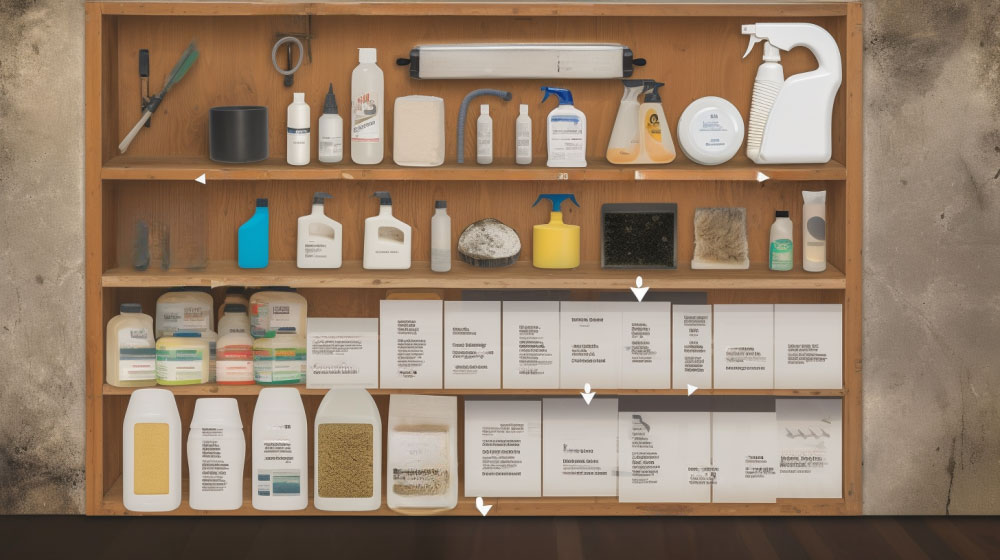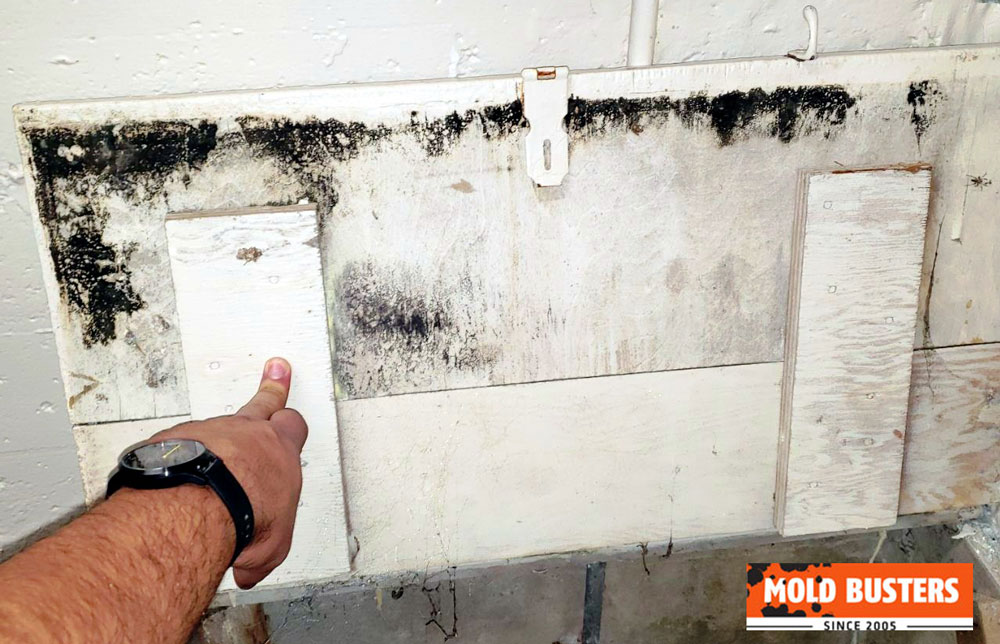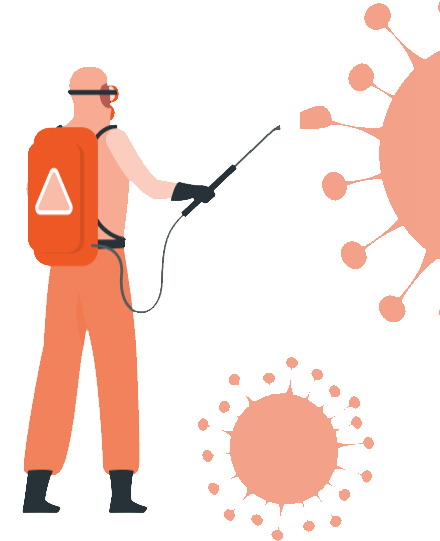Does Bleach Kill Mold?
Exploring Effectiveness, Safety, and Alternatives
Mold infestations pose a significant concern for homeowners due to their potential health risks and damage to property. A commonly suggested solution for mold removal is bleach, a powerful cleaning agent. But does bleach effectively kill mold?
The answer is yes, bleach can kill mold on non-porous surfaces; however, its effectiveness on porous surfaces like wood and drywall is limited. In this comprehensive guide, we will delve into the specifics of bleach’s mold-killing capabilities, safety concerns, and alternative solutions for mold removal.
Key Takeaways
- Bleach can be an effective mold-killing agent on non-porous surfaces but may not be as effective on porous materials such as wood, drywall, and ceiling tiles.
- Bleach is not always the most effective solution for killing black mold, and alternative methods may be more appropriate in certain situations.
- When using bleach for mold removal, follow proper safety precautions including adequate ventilation, wearing protective gear, and avoiding mixing bleach with other cleaning agents.
- The time it takes for bleach to kill mold depends on various factors, including the type of mold, the surface it’s on, and the concentration of the bleach solution.
- Bleach can be used to address mold in various household situations, such as in the shower, on clothes, and on mattresses, but it’s essential to follow the appropriate application methods.
- Be aware of the environmental impact of using bleach and consider consulting a professional mold remediation service for extensive mold problems or situations where bleach may not be the best solution.
10% OFF
Schedule services online and save!
Available for home owners, landlords, businesses & property managers. If you are a tenant, please call to schedule your appointment.
YOUR PROMO CODE
MARCH10
Valid until March 31st, 2023

Understanding Mold
Mold is a type of fungus that thrives in damp, humid conditions. There are various types of mold, including black, white, and green mold, each posing different health risks. Some molds produce allergens, irritants, and toxic substances, which can cause allergic reactions, respiratory problems, and other health issues.
Types of Mold
Health Risks Associated with Mold Exposure
- Allergic reactions (sneezing, runny nose, skin rash)
- Asthma attacks
- Respiratory infections
Mold Growth Conditions
- Dampness and humidity
- Poor ventilation
- Organic material (wood, drywall, carpet)
Bleach: A Mold Removal Solution?
Bleach is a commonly used cleaning agent that many people turn to for mold removal. To better understand its effectiveness in this role, let’s explore the chemical composition of bleach, how it kills mold on various surfaces, and its potency against different types of mold.
Chemical Composition of Bleach
Bleach is a chemical compound primarily composed of sodium hypochlorite (NaOCl), which is responsible for its disinfecting and whitening properties. It also contains chlorine, a potent oxidizing agent that contributes to bleach’s effectiveness as a cleaning solution.
How Bleach Kills Mold on Various Surfaces

Bleach works by breaking down the cell walls of mold spores, thereby killing them and preventing further growth. Its oxidizing properties also help to remove the stains and discoloration caused by mold growth. However, bleach’s effectiveness in killing mold varies depending on the surface it is applied to:
- Non-porous surfaces: On non-porous materials like glass, tile, or metal, bleach can effectively kill mold as it can reach and destroy the mold spores on the surface.
- Porous surfaces: On porous materials like wood or drywall, bleach struggles to penetrate and reach the mold’s roots. As a result, it may only remove surface mold, leaving the roots behind, which can lead to mold regrowth.
In the table below, we summarize the effectiveness of bleach in various mold-related situations and provide some precautions and alternative solutions. This quick reference guide will help you determine when to use bleach and when to consider other methods for mold removal.
| Situation | Bleach Effectiveness | Precautions & Alternatives |
| Black mold | Limited | Consider alternative methods, such as hydrogen peroxide or professional help |
| Wood | Limited | Use specialized wood cleaners or seek professional assistance |
| Walls, Drywall, and Ceiling | Varies | Test a small area first, consider alternative cleaning methods if needed |
| Shower, Plastic, Clothes | Effective | Dilute bleach properly, follow product guidelines, and test on a small area |
| Mattresses | Limited | Consider using specialized cleaning products or professional help |
| Crawl Spaces | Varies | Ensure proper ventilation, consider professional help for severe infestations |
| Dishes, Shower Curtains | Effective | Dilute bleach properly and follow product guidelines |
| Pink mold | Effective | Follow proper dilution ratios, ventilate area, and test on a small area first |
| White mold | Effective | Dilute bleach properly, ventilate area, and test on a small area before use |
Effectiveness of Bleach on Different Types of Mold
There are numerous types of mold, each with different characteristics and resistance to cleaning agents. While bleach is effective against many common molds found in homes, it may not be as effective against other, more resistant species.
For instance, bleach can effectively kill surface molds like Aspergillus and Penicillium but may struggle to eliminate more stubborn mold species like Stachybotrys chartarum (black mold), which often require professional remediation.
In conclusion, bleach can be a useful mold removal solution for non-porous surfaces and certain types of mold. However, its limitations on porous surfaces and against specific mold species may necessitate alternative cleaning methods or professional intervention.
Does Bleach Kill Black Mold?

Black mold, also known as Stachybotrys chartarum, is a toxic mold that can cause severe health issues and is notoriously difficult to eradicate. In this section, we’ll explore the challenges of killing black mold and discuss whether bleach is an effective solution for this particular mold type.
The Challenges of Killing Black Mold
Black mold poses several challenges when it comes to removal:
- Root penetration: Black mold has a root system that penetrates deep into porous surfaces like wood and drywall. This makes it difficult for surface-level cleaning agents like bleach to reach and eliminate the roots.
- Toxicity: The mycotoxins produced by black mold can cause health problems such as respiratory issues, headaches, and skin irritation. Therefore, it’s crucial to ensure that the mold is removed entirely to prevent exposure to these toxins.
- Regrowth potential: If black mold isn’t eradicated completely, it can regrow and continue to cause problems. This makes it essential to address the root cause of the mold, such as moisture issues, rather than just removing visible growth.
Bleach’s Effectiveness on Black Mold
While bleach is a powerful cleaning agent, it may not be the best solution for removing black mold from porous surfaces. The United States Environmental Protection Agency (EPA) states that bleach is not recommended for porous surfaces, such as wood or drywall, which are often affected by black mold.
Bleach may only remove surface mold on porous materials, leaving the roots behind and allowing the mold to regrow. Additionally, bleach can release toxic fumes, especially when mixed with other cleaning agents, which could exacerbate health issues caused by black mold exposure.
For severe black mold infestations, professional mold remediation services are recommended to ensure the mold is completely eradicated and to address the underlying moisture issues that contribute to mold growth.
Does Bleach Kill Mold on Wood?
When dealing with mold on wood surfaces, it’s crucial to understand the limitations of bleach and consider alternative mold removal methods. In this section, we’ll discuss why bleach may not be the best solution for mold on wood and explore some other options for tackling mold growth on wooden surfaces.
Porous Surfaces and Bleach’s Limitations
Wood is a porous material, meaning it can absorb and retain moisture, providing an ideal environment for mold growth. Due to its inability to penetrate porous surfaces effectively, bleach may only remove surface mold from wood without addressing the deeper root system. Consequently, this can lead to mold regrowth and continued problems. The United States Environmental Protection Agency (EPA) advises against using bleach for mold removal on porous materials like wood.
Alternative Methods for Mold Removal on Wood
Considering bleach’s limitations on wood, alternative mold removal methods are worth exploring:
- Distilled white vinegar: Vinegar, with its natural antifungal and antimicrobial properties, can be an effective and eco-friendly alternative for mold removal on wood. Although it might not be as potent as commercial mold removal products, it can be a safer option for mild to moderate mold growth.
- Borax: A natural mineral compound, borax can be used to clean mold from wood surfaces. Mix one cup of borax with a gallon of water, apply it to the affected area, and scrub the mold away. Borax also helps to prevent mold regrowth by inhibiting spores’ ability to reproduce.
For extensive mold infestations on wood or when dealing with toxic black mold, it’s recommended to consult professional mold remediation services to ensure complete wood mold removal and address any underlying moisture issues.
Does Bleach Kill Mold on Walls, Drywall, and Ceiling?
When it comes to mold on walls, drywall, and ceilings, bleach can be effective in some cases, but there are certain precautions and best practices to follow. In this section, we’ll discuss surface compatibility, bleach’s effectiveness, and the necessary precautions to take when using bleach on these surfaces.
Surface Compatibility and Bleach’s Effectiveness
Bleach can be effective in killing mold on non-porous surfaces like tiles, glass, and certain types of walls. However, when it comes to porous materials like drywall and ceiling tiles, bleach may not be the best solution. Bleach can remove surface mold from these materials, but it cannot penetrate deep enough to kill the mold’s root system, which can lead to regrowth.
Keep in mind that bleach is not a long-term solution for mold growth. Addressing the underlying moisture issue is essential to prevent mold from returning. For extensive mold infestations, consider hiring a professional mold remediation company to ensure complete removal and address any underlying problems.
Does Bleach Kill Mold in Various Household Situations?
Mold can grow in various household situations, and bleach can be an effective solution for some of them. In this section, we’ll discuss using bleach to kill mold in the shower, on plastic, on clothes, on a mattress, in crawl spaces, on dishes, and on shower curtains. We’ll also provide guidelines for effectively using bleach in these situations.
In the Shower
Bleach can effectively kill mold on non-porous surfaces in the shower, such as tiles and glass. Mix 1 cup of bleach per gallon of water and use a spray bottle or cloth to apply the solution to the affected areas. Allow it to sit for at least 10 minutes before scrubbing and rinsing the area clean.
On Plastic
To clean mold from plastic items, soak them in a bleach solution (1 cup of bleach per gallon of water) for 15 to 30 minutes. After soaking, scrub the items with a brush and rinse thoroughly with water.
On Clothes
For mold on clothes, add 3/4 cup of bleach to the washing machine along with your regular detergent. Make sure the fabric is bleach-safe and follow the care instructions on the clothing label. Run the washer on a hot water cycle to help kill mold spores.
On a Mattress
Bleach should not be used directly on a mattress, as it can damage the fabric and materials. Instead, consider using a non-chlorine bleach alternative or a specialized mold cleaner designed for use on fabrics.
In Crawl Spaces
Bleach can be used to clean mold from non-porous surfaces in crawl spaces. However, since crawl spaces often have limited ventilation and can be difficult to access, it’s important to take safety precautions and wear protective gear when using bleach in these areas. Consider hiring a professional crawl space mold remediation service if you have extensive mold growth in your crawl space.
On Dishes
To clean mold from dishes, fill a sink or basin with a bleach solution (1 cup of bleach per gallon of water). Soak the dishes for at least 15 minutes, then scrub with a brush and rinse thoroughly with water.
On Shower Curtains
For mold on shower curtains, remove the curtain and soak it in a bleach solution (1 cup of bleach per gallon of water) for 15 to 30 minutes. Scrub the curtain with a brush, rinse thoroughly with water, and hang it to dry.
How Long Does It Take Bleach to Kill Mold?
The time it takes for bleach to kill mold can vary depending on several factors, such as the type and extent of mold growth, the surface material, and the concentration of bleach used. In this section, we’ll discuss the factors that influence the time it takes for bleach to kill mold and provide guidelines for proper application and duration.
Factors That Influence the Time It Takes for Bleach to Kill Mold
- Type of mold: Some mold species are more resistant to bleach than others. Black mold, for instance, has a protective outer layer that can make it more difficult to kill with bleach.
- Extent of mold growth: The more extensive the mold growth, the longer it may take for bleach to effectively kill the mold. It may be necessary to apply multiple treatments to eradicate the mold entirely.
- Surface material: Bleach is most effective on non-porous surfaces like glass, tile, and metal. Porous surfaces like wood, drywall, and fabrics may require alternative methods or longer treatment times, as bleach can have difficulty penetrating the material and reaching the mold’s roots.
- Concentration of bleach: The strength of the bleach solution can impact how long it takes to kill mold. A stronger bleach solution may work more quickly, but it’s important to follow the manufacturer’s guidelines to avoid damage to surfaces or health risks.
Proper Application and Duration of Bleach
When using bleach to kill mold, it’s essential to apply it properly to ensure its effectiveness. Here are some guidelines for proper application and duration:
- Prepare the bleach solution: Mix 1 cup of bleach per gallon of water, ensuring the bleach is appropriate for the surface you’re treating. Always follow the manufacturer’s guidelines for bleach concentration and safety precautions.
- Apply the bleach solution: Use a spray bottle, cloth, or sponge to apply the bleach solution to the affected area. Be sure to cover the entire area and avoid over-saturating porous surfaces.
- Allow the bleach to sit: Let the bleach solution sit on the mold for at least 10 to 15 minutes. This dwell time allows the bleach to penetrate the mold and break down its cellular structure.
- Scrub and rinse: After the bleach has had time to work, scrub the area with a brush, cloth, or sponge to remove the mold. Rinse the area thoroughly with water to remove any remaining bleach residue.
- Inspect and repeat if necessary: Check the area for any remaining mold. If mold is still present, repeat the treatment process as needed.
Remember to address the underlying moisture issues to prevent mold from recurring and always wear appropriate protective gear when handling bleach.
Safety Concerns and Precautions of Bleach Usage
Using bleach as a mold-killing agent comes with some safety concerns and precautions that need to be taken into account. In this section, we’ll discuss ventilation and respiratory irritation, the dangers of mixing bleach with other cleaning agents, the importance of protective gear and safe handling, and the environmental impact of using bleach.
Ventilation and Respiratory Irritation
Bleach emits strong fumes that can cause respiratory irritation and other health issues, especially in enclosed spaces. When using bleach, it’s crucial to ensure proper ventilation by opening windows and doors, using fans, and avoiding prolonged exposure to the fumes. The U.S. Environmental Protection Agency (EPA) advises against using bleach in poorly ventilated areas.
Mixing Bleach with Other Cleaning Agents
Bleach should never be mixed with other cleaning agents, especially those containing ammonia or acids, as the resulting chemical reaction can produce toxic and potentially lethal gases, such as chlorine gas. The Centers for Disease Control and Prevention (CDC) emphasizes the importance of not mixing bleach with other cleaning products.
Protective Gear and Safe Handling
When using bleach, it’s important to wear appropriate protective gear to minimize the risk of skin irritation, eye damage, and inhalation of harmful fumes. This includes wearing gloves, goggles, and a mask. The Occupational Safety and Health Administration (OSHA) provides guidelines for safe handling and storage of bleach.
Environmental Impact
Bleach is a potent chemical that can have negative environmental impacts if not used and disposed of correctly. It can harm aquatic life and contribute to the formation of dioxins, which are toxic and persistent environmental pollutants. According to the EPA, bleach should be used and disposed of responsibly to minimize its environmental impact.
Alternatives to Bleach for Mold Removal
While bleach is a popular choice for mold removal, there are other effective and eco-friendly alternatives available:
- Vinegar: A natural, non-toxic solution that kills approximately 82% of mold species
- Hydrogen peroxide: A powerful antifungal and antibacterial agent
- Baking soda: A gentle, non-toxic cleaner that also absorbs moisture
- Tea tree oil: A natural fungicide with antimicrobial properties
Concerned About Mold? Get a Free Inspection!
Bleach can kill mold on non-porous surfaces, but it may not be effective on porous materials like wood and drywall. To ensure your home is truly mold-free, contact Mold Busters for a free virtual mold inspection. Our experts will provide a comprehensive assessment and plan to tackle any mold issue, ensuring your home is safe and healthy.
Book Your Free Virtual Inspection NowMold Prevention and Remediation
Preventing mold growth is the best way to maintain a healthy living environment. Here are some tips for preventing mold:
- Control humidity levels and ensure proper ventilation
- Fix water leaks and dampness promptly
- Regularly clean and maintain household surfaces
When dealing with a severe mold issue, it’s crucial to consult a professional mold remediation service. At Mold Busters, we provide expert mold services in Ottawa and mold services in Montreal areas, ensuring your home is mold-free and safe for your family.
Our Services
Our most popular services include:
🔎 Request a Free Consultation
FAQ
While bleach is effective at killing mold on non-porous surfaces, it struggles to penetrate porous materials like wood and drywall. As a result, it may only remove surface mold, leaving the roots behind, which can lead to mold regrowth.
Bleach can be safely used for mold removal when following proper safety precautions, such as wearing gloves, goggles, and a mask, and ensuring adequate ventilation. However, never mix bleach with ammonia or other cleaning agents, as this can produce toxic gases.
Typically, bleach needs to sit on the mold-affected surface for at least 15 minutes to kill mold effectively. However, always follow the manufacturer’s instructions for the best results.
Yes, there are several eco-friendly alternatives for mold removal, such as vinegar, hydrogen peroxide, baking soda, and tea tree oil. These solutions can be effective at killing mold while posing fewer health risks and being more environmentally friendly.
You should leave bleach on mold for at least 15 minutes to effectively kill mold spores. However, it is essential to follow the manufacturer’s instructions for the specific bleach product you are using to achieve the best results. Keep in mind that bleach is most effective on non-porous surfaces and may not be suitable for all types of materials.
To properly dilute bleach for mold removal, mix one cup of bleach with one gallon of water. This creates a solution with a concentration of around 5% sodium hypochlorite, which is effective for mold removal on non-porous surfaces. Always wear protective gloves and ensure proper ventilation when handling bleach. Remember to never mix bleach with other cleaning agents, as this can create toxic fumes.

Conclusion
While bleach is a powerful cleaning agent that can kill mold on non-porous surfaces, its effectiveness on porous surfaces like wood and drywall is limited. Furthermore, it’s essential to take safety precautions when using bleach and consider alternative mold removal solutions. Ultimately, preventing mold growth and seeking professional help for severe mold issues is the best approach to maintain a healthy living environment.
Trust the Experts at Mold Busters for Professional Mold Services
While DIY bleach mold removal can sometimes help, it’s always better to rely on professionals for the most effective and safe solutions. At Mold Busters, we provide comprehensive services to tackle all your mold-related concerns.
Start by taking advantage of our Free Virtual Mold Inspection, a no-cost, contactless assessment of mold growth in your home or office. Once you’ve identified a potential problem, our accurate and reliable Mold Testing services can help determine the type and severity of the mold infestation.
For safe and effective mold removal, trust our expert team and their use of the latest techniques and equipment in our comprehensive Mold Removal services. If you’re in Ottawa, our professional mold removal services in Ottawa are ready to keep your home and office mold-free. Similarly, Montreal residents can count on our local team of experts through our mold removal services in Montreal to tackle any mold issues they might be facing.
Don’t let mold take over your life – Contact Mold Busters today and let us help you eliminate mold for good. Choose Mold Busters for peace of mind and a healthy living environment. We’re here to help you every step of the way.